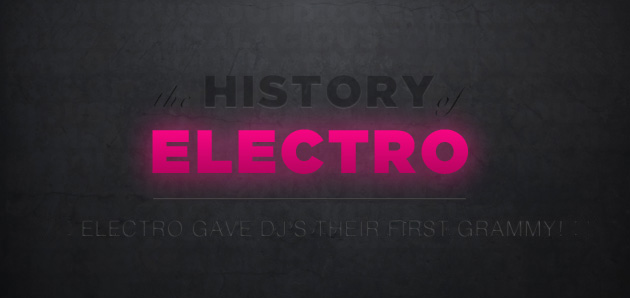This is part two in Salacious Sound’s The History of Electro, chronicling the rise of electro to pop status. Check back on Friday for the next installment, or go back to part one.

The year was 1983. Grammy night. My mother let me stay up late to watch them because she knew how much I loved pop music and especially Michael Jackson. She was convinced, back then, that Michael was a pedophile because he brought Emanuel Lewis (The child star of TV’s Webster) as his “date.” I argued that he was “normal” because he also brought Brooke Shields along with him. The entire program seemed to revolve almost entirely around Michael and his “dates.” After all, it was the year that “Thriller” broke the record set by the Beatles for album sales, and “Beat It” was still stuck in every one’s head. But the real highlight of the night came from a performance by one of the nominees for Best Rhythm and Blues Instrumental Performance.
Herbie was playing a keytar synthesiser that sounded ultra futuristic and just looked really cool
The artist was an accomplished Jazz pianist named Herbie Hancock who’s work includes collaborations with Jazz greats such as Miles Davis, Donald Byrd and Freddie Hubbard. This particular performance blew every ones mind for three reasons. The first was the fact that Herbie was playing a keytar synthesiser that sounded ultra futuristic and just looked really cool. (A keytar is a keyboard synthesiser that is played more like a guitar than a keyboard.)
That’s just silly and weird, it’s a gimmick, a fad, no one’s going to actually use a record player as an instrument. That’s stupid.
The second was because the drummer seemed to be playing some sort of electronic rubber pads in stead of a traditional drum kit and the third reason was that it looked…like…one of the musicians in the band…was…playing…a…Turntable!?!? What??!? “What is he doing with that record player?” My mother asked.
“It looks like he’s scratching the record on purpose!” I replied.
“That’s just silly and weird, it’s a gimmick, a fad, no one’s going to actually use a record player as an instrument. That’s stupid.” remarked my Mother.
“That’s the coolest thing I’ve ever seen!” I replied.
that moment changed the music industry forever… it was the very first mainstream pop song to feature the Turntable as an instrument
No one knew it at the time, but that moment changed the music industry forever. Herbie Hancock’s pop Electro song “Rock It” was not only Herbie’s first hit single since 1973, it was sooo different from anything he’d ever done before and it was the very first mainstream pop song to feature the Turntable as an instrument. There were many Hip Hop and Electro tracks that had “scratching” in them in the early 80’s but none of them even came close to reaching as wide an audience as Herbie Hancock’s “Rock It.” In fact, Herbie Hancock and his band were awarded the Grammy later that night for the song and Grandmixer D.ST (now known as DXT) became the first DJ (Turntablist) to win a Grammy. Hip Hop and Electro was now considered mainstream and we all have a Jazz musician and a young DJ from Manhattan to thank for it.
Thanks you Herbie Hancock and Thank you Derek Showard.
Written by Splattermonkey.
Check back next Friday for the next chapter in Salacious Sound’s History of Electro, where we’ll investigate the dual development of Afrika Bambaataa and Larry Heard, and the ways they influenced the progression of electro.
